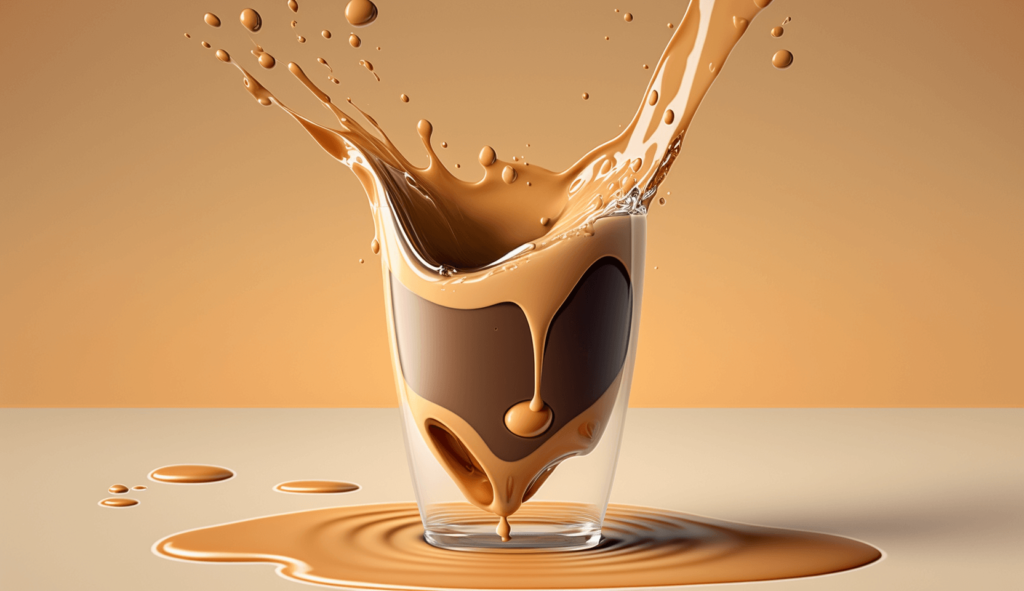As an espresso lover, I understand the excitement of savoring a rich, flavorful, and balanced shot.
When I nail the perfect espresso, it’s truly a delight.
However, I’ve also faced my fair share of challenges, like brewing watery espresso and feeling unsure about how to fix it.
If you’re experiencing similar issues, don’t worry – I’m here to share my journey and help you learn how to fix the causes of watery espresso!
What is Watery Espresso?
Watery espresso refers to a shot of espresso that lacks the rich, bold flavor and velvety texture typically associated with a well-extracted espresso.
Simply speaking it’s when espresso is not strong enough. It often appears thin, overly diluted, and may taste weak or unbalanced.
7 Causes and Fixes For Watery Espresso

If you are wondering why your espresso tastes watery then I have you covered.
In this section, I’ll guide you through common espresso-making issues and provide practical tips to help you overcome these obstacles.
If you want a bird’s eye view of the problems and possible solutions you may find the below table handy:
| Cause | Reason | Fix |
| Insufficient pressure | Weak pump or blocked/clogged group head | Maintain the espresso machine, clean the group head |
| Incorrect grind size | Too coarse or inconsistent grind | Invest in a quality grinder, dial in the grind setting |
| Inaccurate dosing | Under-dosing or over-dosing | Use a scale, adjust the dose for different beans |
| Inappropriate water temperature | Too low or inconsistent temperature | Check and calibrate the espresso machine, preheat cups and portafilter |
| Poor tamping technique | Uneven tamping or insufficient pressure | Use a leveler or distribution tool, practice consistent pressure |
| Low-quality coffee beans | Stale beans or incorrect roast profile | Understand roast profiles, buy fresh, locally roasted beans |
1. Weak Pump
A weak pump can be the culprit behind a watery espresso. I’ve learned that a standard espresso machine should operate at around 9 bars of pressure to extract the best flavors.
When the pump isn’t strong enough, the water won’t pass through the coffee grounds effectively, resulting in a weak shot.
To fix this issue, I’ve found that regular maintenance and servicing of the espresso machine can help ensure the pump functions at its optimal level.
2. Blocked or Clogged Group Head
A blocked or clogged group head may be causing your espresso to turn out watery.
The group head can become clogged with coffee oils and residue over time, affecting the water pressure.
I’ve made it a habit to clean the group head regularly to avoid this issue. I use a brush and a dedicated espresso machine cleaner to ensure the group head stays free from any blockages.
3. Too Coarse Grind Size
Grind size plays a significant role in espresso extraction. When the coffee grounds are too coarse, the water passes through them too quickly, leading to a watery espresso.
To address this, I’ve learned to adjust my grinder to a finer setting. This creates more resistance, allowing the water to extract the coffee’s flavors more effectively.
Remember that each coffee bean may require a different grind size, so be prepared to make adjustments as needed.
4. Inconsistent Grind
I’ve also found that an inconsistent grind can cause a watery espresso.
When the coffee grounds are uneven, the water doesn’t pass through them uniformly, leading to uneven extraction.
I’ve invested in a quality burr grinder, which has made a huge difference in the consistency of my grind. And ever since I’ve been able to achieve a much better espresso.
5. Under And Over Dosing
Using too little coffee can result in a weak, watery espresso.
To avoid under-dosing, I started using a scale to measure my coffee grounds accurately.
This has helped me maintain the ideal coffee-to-water ratio and achieve a richer, more flavorful espresso.
On the flip side, using too much coffee can lead to over-extraction and a bitter taste.
Using a scale has been a game-changer for my espresso-making process. By accurately measuring the coffee grounds, I can maintain the ideal coffee-to-water ratio and ensure a balanced, flavorful espresso shot.
6. Poor Tamping Technique
An uneven tamp can lead to channeling, where water flows unevenly through the coffee grounds, resulting in poor extraction.
Additionally, applying too little pressure when tamping can also cause your espresso to be weak as well. Use about 30 pounds of pressure when tamping, and use a leveler or distribution tool that will help you to create a uniform bed of coffee.
7. Stale Beans
Using stale coffee beans can severely impact the taste of your espresso. I’ve started buying fresh, locally roasted beans and storing them in an airtight container to maintain their freshness and quality.
Some Questions You May Have
Why my espresso puck is soupy?
If your espresso puck is wet and falls apart, the grind could be too fine. That simply means that water can’t flow through the puck well.
On the other hand, if the grind is too coarse, water goes through the puck too fast. This also makes the puck watery.
My Final Thoughts
Now you know why your espresso shots come out watery and how to deal with the problem.
Throughout my espresso journey, I’ve discovered that learning from my mistakes and embracing the challenges have been essential for perfecting my skills.
Tackling common issues like inaccurate dosing, inappropriate water temperature, poor tamping technique, and low-quality beans has led to significant improvements in my espresso shots.
And last but not least – It’s important to remember that practice and patience are key.


